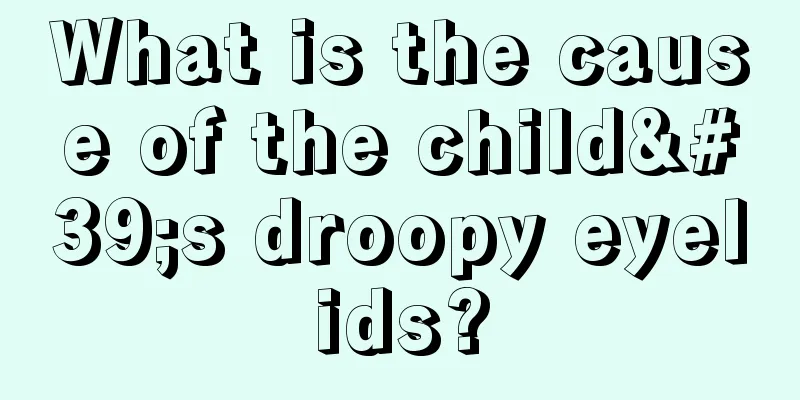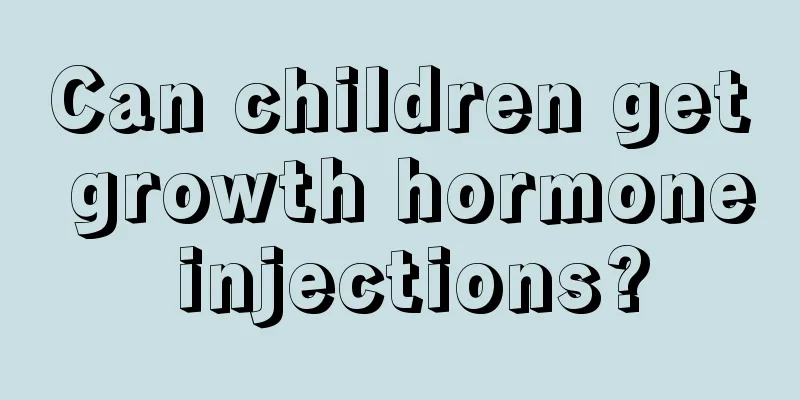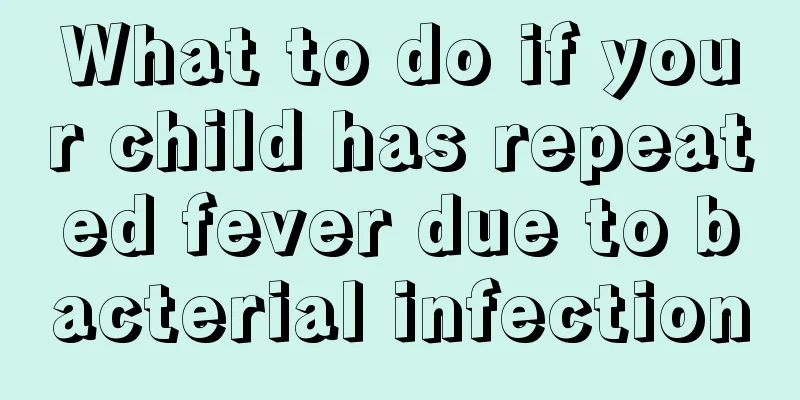What is the cause of the child's droopy eyelids?

|
Drooping eyelids in children is actually a disease that needs further attention. We often know that drooping upper eyelids are a disease called ptosis. Moreover, once the patient has the problem of drooping eyes, further examination will reveal varying degrees of functional loss of the levator palpebrae superioris muscle, which is the position that controls the innervation of the oculomotor nerve. What's wrong with my child's droopy eyelids? Upper eyelid ptosis can be unilateral or bilateral, and can be divided into congenital and acquired types. According to the degree of ptosis, it can be divided into complete ptosis, incomplete ptosis and pseudo-ptosis. The causes are often varied. Congenital ptosis of the upper eyelid is often bilateral and is hereditary, either dominant or recessive. The main reason is due to incomplete development of the oculomotor nerve nucleus or incomplete development of the levator palpebrae superioris muscle. The former is often accompanied by other extraocular muscle paralysis or epicanthus in addition to upper eyelid ptosis, while the latter is usually simple upper eyelid ptosis. Causes Many acquired diseases can affect the levator palpebrae superioris muscle or the branches of the oculomotor nerve that innervates the levator palpebrae superioris muscle and cause ptosis of the upper eyelid, which can be roughly divided into three categories. One is mechanical factors: mainly inflammatory swelling of the upper eyelid, mass growth, excessive fat deposition, etc. which increase the weight of the upper eyelid and make the levator palpebrae superioris muscle unable to fully lift the upper eyelid. One type is myogenic factors: in myasthenia gravis, it may only manifest as ptosis, which can be bilateral or unilateral. Its characteristics are that the symptoms are milder in the morning and worse at night, and may sometimes be accompanied by weakness of other extraocular muscles. If the ptosis is significantly reduced or disappears after the injection of neostigmine, it will help to clearly diagnose and treat the injury. It is easier to diagnose upper eyelid ptosis caused by direct damage to the levator palpebrae superioris muscle due to surgery or trauma. The other type is neurogenic factors: seen in oculomotor nerve palsy caused by various reasons. Mild upper eyelid ptosis may also occur in Horner's syndrome caused by sympathetic nerve paralysis. Hazards 1. If the upper eyelid ptosis is severe and affects the child's vision development, surgery should be performed early. 2. If the ptosis is moderate to mild and does not affect the child's vision development, the child's vision can be checked at the age of 3-4 years old and the timing of surgery can be decided. Warm reminder: If it does not affect the child's vision development, then you need to pay attention to the disease. Don't avoid any treatment just because your child's eyesight hasn't been harmed. The correct way is to choose to go to a regular hospital for surgery before school age so as not to affect the child's psychological development. |
<<: What foods can children eat to nourish their stomachs?
>>: What causes eyelid edema in children?
Recommend
What should I do if my child has corns on his hands?
Any problem with a child is of great concern to p...
Is it necessary to get the hand, foot and mouth vaccine?
Hand, foot and mouth disease is a common disease ...
What should I check if my child often has stomach pain?
Stomach pain is the most common type of physical ...
What to do if your baby catches a cold and has a fever
No matter whether it is cold or warm in all four ...
Six major psychological defects of primary school students that parents should know
Nowadays, there are more and more single children...
What to do if your child has rhinitis and nosebleeds
If a child has a nosebleed due to rhinitis, the f...
Where do children come from?
When we were very young, we always asked our pare...
One year old baby has a cold, cough and runny nose
The baby's physical resistance is relatively ...
What are the symptoms of red and swollen baby fingers?
What are the symptoms of red and swollen baby'...
How to treat children’s tooth decay?
Many younger children have cavities, but how to t...
Early symptoms of brain tumors in adolescents
In our lives, many teenagers overuse their brains...
What to do if your baby has indigestion and spits up milk
If the baby vomits due to indigestion, parents wi...
How to do sports training for children?
Children are a very important member of every fam...
What should I do if my 2-year-old baby can't sleep well at night?
For adults, sleep helps restore physical energy, ...
What to do if your child has hard stools?
Children are the hope of their parents and the fu...









